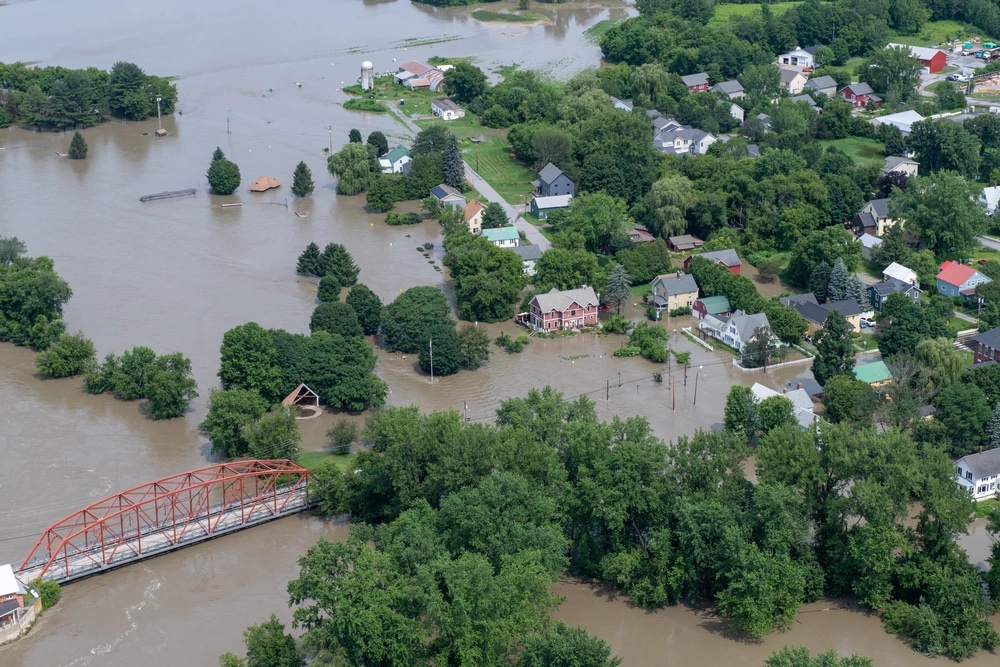Flooding wreaks havoc on Northeastern U.S.

As I sit sweltering under the heat dome in south Texas (it FEELS like 113 degrees here in Houston), I’m following the news of tornadoes in the Midwest and the devastating flooding in Vermont and other states in the Northeast. At least the Saharan dust, which is causing a lot of haze and breathing difficulties, especially in places suffering under the heat dome, is keeping the Atlantic a bit subdued for now. There doesn’t seem to be rest for the weary in the disaster space, as all these events are directly related to our changing climate.
Northeast U.S. flooding
Vermont experienced severe flooding from remnants of Hurricane Irene in 2011, so this isn’t completely foreign to them. I’ll admit my surprise, though, viewing the photos and videos of the rushing waters and the destruction they’ve caused in communities along the usually scenic waterways in this beautifully lush part of the U.S.
Residents along the White River in Hartford evacuated as widespread damage was expected. Rescue operations continued for days, and infrastructure damage is significant. Some roads remain closed, restricting access in and out of the most rural locations.
Flooding in New York’s Hudson Valley that preceded the rain in Vermont is considered a “1000-year event.” The storm resulted in the death of at least one person and brought more than 9 inches of rain over a short period.
President Biden approved a disaster declaration for Vermont, releasing federal assistance for the area to support response and recovery there. And more rain is expected to impact already saturated ground throughout the weekend.
How can philanthropy help?
At CDP, we know from experience that rural communities, like many affected by these floods, often don’t have the systems, structures and resources to manage a full and equitable recovery. Philanthropy must listen to communities to fully understand their long-term needs and to help address them and prepare these communities for future climate-caused disasters.
Flooding is the most common and costly disaster, resulting in economic and infrastructure destruction and death. And water-related hazards continue to increase in frequency, with these 1000-year events becoming much more common. We know flood risks are disproportionately higher for vulnerable and marginalized populations. Yet, our research proves that funding for flooding recovery is often the most difficult to secure for affected communities.
For more information about how best to support communities experiencing flooding events, check out the following resources on our website:
- CDP issue insights about floods, insurance and rural populations. There are many other issues addressed, as well.
- CDP blog posts about how to respond when flooding occurs and how these disasters often affect rural communities differently.
Through CDP’s Disaster Recovery Fund, we hope to grant to local organizations in the flooded areas as they support recovery from these rain events. We would love to have you join us to leverage our collective impact and support those most in need.
